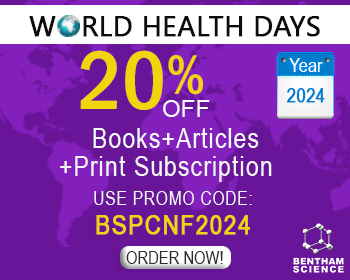Abstract
Mycobacterium tuberculosis, responsible for Tuberculosis (TB), remains the leading cause of mortality among infectious diseases worldwide from a single infectious agent, with an estimated 1.7 million deaths in 2016. Biotin is an essential cofactor in M. tuberculosis that is required for lipid biosynthesis and gluconeogenesis. M. tuberculosis relies on de novo biotin biosynthesis to obtain this vital cofactor since it cannot scavenge sufficient biotin from a mammalian host. The biotin biosynthetic pathway in M. tuberculosis has been well studied and rigorously genetically validated providing a solid foundation for medicinal chemistry efforts. This review examines the mechanism and structure of the enzymes involved in biotin biosynthesis and ligation, summarizes the reported genetic validation studies of the pathway, and then analyzes the most promising inhibitors and natural products obtained from structure-based drug design and phenotypic screening.
Keywords: Tuberculosis, infectious disease, Mycobacterium tuberculosis, biotin, biosynthesis, enzymology, antibiotics.
[http://dx.doi.org/10.1016/S0966-842X(01)02131-X] [PMID: 11553458]
[http://dx.doi.org/10.1073/pnas.052548299] [PMID: 11891304]
[http://dx.doi.org/10.1038/ng.2744] [PMID: 23995134]
[http://dx.doi.org/10.1038/ng.3195] [PMID: 25599400]
[http://dx.doi.org/10.1056/NEJMra1413919] [PMID: 26605929]
[http://dx.doi.org/10.1073/pnas.0902437106] [PMID: 19706556]
[http://dx.doi.org/10.1136/jech-2012-201640] [PMID: 23155059]
[http://dx.doi.org/10.3390/antibiotics3030317] [PMID: 27025748]
[http://dx.doi.org/10.1038/s41598-017-01767-4] [PMID: 28515464]
[http://dx.doi.org/10.1080/00365540110076822] [PMID: 11868765]
[http://dx.doi.org/10.1086/518655] [PMID: 17624828]
[http://dx.doi.org/10.1136/bmj.d5974] [PMID: 21964347]
[http://dx.doi.org/10.1136/bmj.g4643] [PMID: 25097193]
[http://dx.doi.org/10.1073/pnas.1404386111] [PMID: 25288770]
[http://dx.doi.org/10.4103/0974-777X.81691] [PMID: 21731301]
[http://dx.doi.org/10.1093/cid/ciy179]
[PMID: 17943789]
[http://dx.doi.org/10.3201/eid1903.120246] [PMID: 23622714]
[PMID: 17131774]
[http://dx.doi.org/10.4103/2229-516X.112228] [PMID: 23776831]
[http://dx.doi.org/10.1056/NEJMp1314385] [PMID: 25140952]
[http://dx.doi.org/10.1128/AAC.06126-11] [PMID: 22391540]
[http://dx.doi.org/10.1007/s40121-013-0009-3] [PMID: 25134476]
[http://dx.doi.org/10.1007/s40265-014-0241-5] [PMID: 24923253]
[http://dx.doi.org/10.1128/AAC.46.2.267-274.2002] [PMID: 11796329]
[http://dx.doi.org/10.1128/microbiolspec.MGM2-0036-2013]] [PMID: 26103975]
[http://dx.doi.org/10.1038/nature09657] [PMID: 21270886]
[http://dx.doi.org/10.1021/ja01331a030]
[http://dx.doi.org/10.1128/JB.27.6.561-581.1934] [PMID: 16559721]
[http://dx.doi.org/10.1042/bj0210712]
[http://dx.doi.org/10.1515/bchm2.1936.242.1-2.43]]
[http://dx.doi.org/10.1126/science.92.2377.62] [PMID: 17831766]
[http://dx.doi.org/10.1042/bj1020381] [PMID: 5339763]
[http://dx.doi.org/10.1146/annurev.bi.58.070189.001211] [PMID: 2673009]
[http://dx.doi.org/10.2174/1389203033487199] [PMID: 12769720]
[http://dx.doi.org/10.1016/j.phytochem.2007.03.038] [PMID: 17512961]
[http://dx.doi.org/10.1002/biof.8] [PMID: 19319844]
[http://dx.doi.org/10.1146/annurev.nutr.25.121304.131724] [PMID: 16011464]
[http://dx.doi.org/10.1152/ajpgi.00231.2013] [PMID: 23989008]
[http://dx.doi.org/10.1002/yea.959] [PMID: 12557275]
[http://dx.doi.org/10.1073/pnas.0609905104] [PMID: 17301237]
[http://dx.doi.org/10.1128/JB.01208-08] [PMID: 18931129]
[http://dx.doi.org/10.1128/JB.112.3.1280-1287.1972] [PMID: 4565539]
[http://dx.doi.org/10.1128/JB.133.1.270-278.1978] [PMID: 338581]
[http://dx.doi.org/10.1016/0005-2736(85)90395-5] [PMID: 3890946]
[http://dx.doi.org/10.1002/biof.5520110129] [PMID: 10705974]
[http://dx.doi.org/10.1128/AEM.71.4.1850-1855.2005] [PMID: 15812011]
[http://dx.doi.org/10.4161/bioe.26887] [PMID: 24256712]
[http://dx.doi.org/10.1016/0003-2697(62)90041-6] [PMID: 13864137]
[http://dx.doi.org/10.1016/0009-8981(82)90322-9] [PMID: 7127840]
[http://dx.doi.org/10.1093/ajcn/56.2.427] [PMID: 1636621]
[http://dx.doi.org/10.1038/nchembio.420] [PMID: 20693992]
[http://dx.doi.org/10.1039/c1mb05022b] [PMID: 21437340]
[http://dx.doi.org/10.1128/JB.96.2.515-524.1968] [PMID: 4877129]
[http://dx.doi.org/10.1128/JB.112.2.830-839.1972] [PMID: 4563978]
[http://dx.doi.org/10.1021/bi902097j] [PMID: 20565114]
[http://dx.doi.org/10.1128/JB.178.14.4122-4130.1996] [PMID: 8763940]
[http://dx.doi.org/10.1099/mic.0.27731-0] [PMID: 15758219]
[http://dx.doi.org/10.1074/jbc.M112.410290] [PMID: 22965231]
[http://dx.doi.org/10.1016/0378-1119(90)90496-E] [PMID: 2110099]
[http://dx.doi.org/10.1042/bj2870685] [PMID: 1445232]
[http://dx.doi.org/10.1038/nchembio.2361] [PMID: 28414710]
[http://dx.doi.org/10.1038/nchembio.2359] [PMID: 28414711]
[http://dx.doi.org/10.1107/S2059798318010136] [PMID: 30289406]
[http://dx.doi.org/10.1007/s13238-011-1100-8] [PMID: 21976058]
[http://dx.doi.org/10.1074/jbc.M303867200] [PMID: 12732651]
[http://dx.doi.org/10.1016/j.cbpa.2011.03.001] [PMID: 21435937]
[http://dx.doi.org/10.1016/S0083-6729(01)61002-1] [PMID: 11153271]
[http://dx.doi.org/10.1126/science.1088493] [PMID: 14704425]
[http://dx.doi.org/10.1021/jm901624n] [PMID: 20038112]
[http://dx.doi.org/10.1073/pnas.1513033112] [PMID: 26221021]
[http://dx.doi.org/10.1371/journal.pone.0002320]] [PMID: 18509457]
[http://dx.doi.org/10.1016/j.jnutbio.2005.03.019] [PMID: 15992680]
[http://dx.doi.org/10.1073/pnas.0912300107] [PMID: 20080782]
[http://dx.doi.org/10.1016/j.tibs.2017.02.001] [PMID: 28268045]
[http://dx.doi.org/10.1016/j.jmb.2005.08.032] [PMID: 16169557]
[http://dx.doi.org/10.1016/j.chembiol.2011.08.013] [PMID: 22118677]
[http://dx.doi.org/10.1016/j.jmb.2008.12.086] [PMID: 19385043]
[http://dx.doi.org/10.1128/JB.06549-11] [PMID: 22210766]
[http://dx.doi.org/10.1002/pro.2262] [PMID: 23559560]
[http://dx.doi.org/10.1371/journal.pone.0096757]] [PMID: 24816803]
[http://dx.doi.org/10.1111/mmi.12446] [PMID: 24261685]
[http://dx.doi.org/10.1021/bi1003958] [PMID: 20499837]
[http://dx.doi.org/10.1007/s00109-011-0811-x] [PMID: 21894551]
[http://dx.doi.org/10.1007/s00018-012-1096-0] [PMID: 22869039]
[http://dx.doi.org/10.1042/BJ20080709] [PMID: 18613815]
[http://dx.doi.org/10.1074/jbc.M408578200] [PMID: 15632194]
[http://dx.doi.org/10.1128/JB.188.2.477-486.2006] [PMID: 16385038]
[http://dx.doi.org/10.1099/mic.0.027714-0] [PMID: 19423629]
[http://dx.doi.org/10.2174/1568026613666131111103149] [PMID: 24236729]
[http://dx.doi.org/10.1128/microbiolspec.VMBF-0008-2015] [PMID: 27227307]
[http://dx.doi.org/10.1111/j.1574-6968.1998.tb13221.x] [PMID: 9809415]
[http://dx.doi.org/10.1073/pnas.140225297] [PMID: 10880571]
[http://dx.doi.org/10.1128/microbiolspec.MGM2-0018-2013]]
[http://dx.doi.org/10.1099/00221287-148-10-3007] [PMID: 12368434]
[http://dx.doi.org/10.1128/mBio.01179-14] [PMID: 24865558]
[http://dx.doi.org/10.1007/978-1-4939-2450-9_10] [PMID: 25779316]
[http://dx.doi.org/10.1007/978-1-4939-2398-4_6] [PMID: 25636614]
[http://dx.doi.org/10.1046/j.1365-2958.2003.03425.x] [PMID: 12657046]
[http://dx.doi.org/10.1073/pnas.2134250100] [PMID: 14569030]
[http://dx.doi.org/10.1073/pnas.231275498] [PMID: 11606763]
[http://dx.doi.org/10.1093/nar/gkp015] [PMID: 19174563]
[http://dx.doi.org/10.1073/pnas.1018301108] [PMID: 21368134]
[http://dx.doi.org/10.1371/journal.ppat.1002264]] [PMID: 21980288]
[http://dx.doi.org/10.1128/microbiolspec.MGM2-0026-2013]] [PMID: 26103978]
[http://dx.doi.org/10.1007/978-1-4939-2450-9_9] [PMID: 25779315]
[http://dx.doi.org/10.1128/mBio.01769-17] [PMID: 29184016]
[http://dx.doi.org/10.1038/s41467-018-03447-x] [PMID: 29520101]
[http://dx.doi.org/10.1038/s41579-018-0013-4] [PMID: 29691481]
[http://dx.doi.org/10.1002/0470846526.ch12] [PMID: 9949807]
[http://dx.doi.org/10.1080/07391102.2015.1022602] [PMID: 25855385]
[http://dx.doi.org/10.1016/S1369-5274(02)00281-3] [PMID: 11834365]
[http://dx.doi.org/10.1016/j.synbio.2016.01.005] [PMID: 29062923]
[http://dx.doi.org/10.1038/35085034] [PMID: 11483990]
[http://dx.doi.org/10.1073/pnas.0503272102] [PMID: 15928073]
[http://dx.doi.org/10.1128/JB.00216-07] [PMID: 17483222]
[http://dx.doi.org/10.1038/nrmicro2236] [PMID: 19855401]
[http://dx.doi.org/10.1073/pnas.96.22.12833] [PMID: 10536008]
[http://dx.doi.org/10.1128/JB.176.2.535-539.1994] [PMID: 8288551]
[http://dx.doi.org/10.1099/00221287-146-9-2209] [PMID: 10974108]
[http://dx.doi.org/10.1073/pnas.1315860110] [PMID: 24191058]
[http://dx.doi.org/10.1111/mmi.12817] [PMID: 25287944]
[http://dx.doi.org/10.1016/j.jbiotec.2011.12.001] [PMID: 22178235]
[http://dx.doi.org/10.1111/mmi.14066] [PMID: 29995988]
[http://dx.doi.org/10.1016/j.bbagen.2018.05.015] [PMID: 29852200]
[http://dx.doi.org/10.1021/ja00085a061]
[http://dx.doi.org/10.1111/j.1432-1033.1994.tb18659.x] [PMID: 8125118]
[http://dx.doi.org/10.1046/j.1365-2958.1996.t01-4-442924.x] [PMID: 8830257]
[http://dx.doi.org/10.1016/j.micinf.2010.08.010] [PMID: 20974274]
[http://dx.doi.org/10.1016/S0959-440X(02)00391-3] [PMID: 12504684]
[http://dx.doi.org/10.1073/pnas.1207028109] [PMID: 23045647]
[http://dx.doi.org/10.1080/07391102.2015.1068223] [PMID: 26132538]
[http://dx.doi.org/10.1186/1472-6750-13-13] [PMID: 23413993]
[http://dx.doi.org/10.1016/S0014-5793(02)02342-6] [PMID: 11904168]
[http://dx.doi.org/10.1038/s41598-017-01490-0] [PMID: 28526858]
[http://dx.doi.org/10.1128/ecosalplus.3.6.3.5]] [PMID: 26443737]
[http://dx.doi.org/10.1016/S0014-5793(01)02325-0] [PMID: 11322938]
[http://dx.doi.org/10.1016/j.bbapap.2010.12.004] [PMID: 21182990]
[http://dx.doi.org/10.1006/jmbi.1998.2086] [PMID: 9813126]
[http://dx.doi.org/10.1046/j.1432-1327.1999.00006.x] [PMID: 9914476]
[http://dx.doi.org/10.1111/j.1432-1033.1996.00301.x] [PMID: 8617279]
[http://dx.doi.org/10.1099/00221287-148-10-2967] [PMID: 12368430]
[http://dx.doi.org/10.1039/b517922j] [PMID: 16557306]
[http://dx.doi.org/10.1016/S0040-4020(98)00999-5]
[http://dx.doi.org/10.1021/bi991620j] [PMID: 10642176]
[http://dx.doi.org/10.1042/bj2830327] [PMID: 1575677]
[http://dx.doi.org/10.1107/S0907444996001448] [PMID: 15299653]
[http://dx.doi.org/10.1074/jbc.M604477200] [PMID: 16769720]
[http://dx.doi.org/10.1016/j.biocel.2014.11.006] [PMID: 25462832]
[http://dx.doi.org/10.1006/jmbi.1999.2997] [PMID: 10452893]
[http://dx.doi.org/10.1021/bi026339a] [PMID: 12379100]
[http://dx.doi.org/10.1111/j.1742-4658.2006.05479.x] [PMID: 16984394]
[http://dx.doi.org/10.1074/jbc.M207239200] [PMID: 12218056]
[http://dx.doi.org/10.1021/jo3008435] [PMID: 22724679]
[http://dx.doi.org/10.1021/ja204036t] [PMID: 21988601]
[http://dx.doi.org/10.1002/cbic.201300748] [PMID: 24482078]
[http://dx.doi.org/10.1021/bi0358059] [PMID: 14756557]
[http://dx.doi.org/10.1021/bi00035a004] [PMID: 7669756]
[http://dx.doi.org/10.1021/bi00035a003] [PMID: 7669755]
[http://dx.doi.org/10.1073/pnas.95.10.5495] [PMID: 9576910]
[http://dx.doi.org/10.1111/j.1742-4658.2012.08506.x] [PMID: 22284390]
[http://dx.doi.org/10.1107/S090744499801381X] [PMID: 10089457]
[http://dx.doi.org/10.1016/j.tube.2015.02.046] [PMID: 25801336]
[http://dx.doi.org/10.1021/acscatal.8b03475]
[http://dx.doi.org/10.1016/S0969-2126(00)00042-3] [PMID: 8081756]
[http://dx.doi.org/10.1021/bi9631677] [PMID: 9125495]
[http://dx.doi.org/10.1271/bbb.56.1780] [PMID: 1369072]
[http://dx.doi.org/10.1271/bbb.58.1738] [PMID: 7765490]
[http://dx.doi.org/10.1021/cr4004709] [PMID: 24476342]
[http://dx.doi.org/10.1021/bi0104625] [PMID: 11444981]
[http://dx.doi.org/10.1016/0006-291X(79)91553-5] [PMID: 391234]
[http://dx.doi.org/10.1016/S0300-9084(77)80096-5] [PMID: 322726]
[http://dx.doi.org/10.1016/j.bbrc.2009.02.089] [PMID: 19245793]
[http://dx.doi.org/10.1021/bi060662m] [PMID: 17014080]
[http://dx.doi.org/10.1042/BST0330820] [PMID: 16042606]
[http://dx.doi.org/10.1016/0006-291X(79)91731-5] [PMID: 378232]
[http://dx.doi.org/10.1021/bi048040t] [PMID: 15610037]
[http://dx.doi.org/10.1021/bi101023c] [PMID: 20961145]
[http://dx.doi.org/10.1016/j.bbapap.2012.01.010] [PMID: 22326745]
[http://dx.doi.org/10.1021/ja3012963] [PMID: 22607542]
[http://dx.doi.org/10.1016/j.abb.2004.10.003] [PMID: 15581586]
[http://dx.doi.org/10.1016/j.abb.2007.12.001] [PMID: 18155152]
[http://dx.doi.org/10.1021/bi801035b] [PMID: 18690713]
[http://dx.doi.org/10.1021/bi201042r] [PMID: 21859080]
[http://dx.doi.org/10.1021/bi0261084] [PMID: 12614166]
[http://dx.doi.org/10.1021/bi9926227] [PMID: 10819988]
[http://dx.doi.org/10.1021/bi010463x] [PMID: 11444982]
[http://dx.doi.org/10.1021/ja027004j] [PMID: 12148999]
[http://dx.doi.org/10.1016/S0003-9861(02)00421-6] [PMID: 12234497]
[http://dx.doi.org/10.1515/9783110308426.107]
[http://dx.doi.org/10.1016/j.chembiol.2005.04.003] [PMID: 15850974]
[http://dx.doi.org/10.1016/j.chembiol.2005.04.012] [PMID: 15911379]
[http://dx.doi.org/10.1128/EC.00191-06] [PMID: 17259550]
[http://dx.doi.org/10.1006/abbi.1996.0045] [PMID: 8579371]
[http://dx.doi.org/10.1006/bbrc.1995.2900] [PMID: 8554581]
[http://dx.doi.org/10.1007/s00253-017-8454-7] [PMID: 28812125]
[http://dx.doi.org/10.1021/bi061576p] [PMID: 17115711]
[http://dx.doi.org/10.1016/j.bbapap.2008.03.011] [PMID: 18442489]
[http://dx.doi.org/10.1038/nrd2201] [PMID: 17159923]
[http://dx.doi.org/10.1046/j.1365-2958.2002.02832.x] [PMID: 11952893]
[http://dx.doi.org/10.1016/0022-2836(81)90043-7] [PMID: 6456358]
[http://dx.doi.org/10.1042/bj3020881] [PMID: 7945216]
[http://dx.doi.org/10.1002/pro.2475] [PMID: 24723382]
[http://dx.doi.org/10.1016/j.jmb.2005.12.066] [PMID: 16438984]
[http://dx.doi.org/10.1074/jbc.M112.356576] [PMID: 22437830]
[http://dx.doi.org/10.1016/0006-291X(79)91866-7] [PMID: 486211]
[http://dx.doi.org/10.1007/s10529-013-1329-9] [PMID: 24068501]
[http://dx.doi.org/10.1007/s10295-016-1890-z] [PMID: 28012009]
[http://dx.doi.org/10.1007/s10529-016-2075-6] [PMID: 26956238]
[http://dx.doi.org/10.1016/j.pestbp.2015.05.006] [PMID: 26615154]
[http://dx.doi.org/10.7164/antibiotics.28.215] [PMID: 805118]
[http://dx.doi.org/10.1002/1099-0690(200202)2002:4<736:AID-EJOC736>3.0.CO;2-6]
[http://dx.doi.org/10.1002/1521-3765(20020118)8:2<439:AID-CHEM439>3.0.CO;2-5] [PMID: 11843156]
[http://dx.doi.org/10.1016/j.biochi.2009.03.019] [PMID: 19345718]
[http://dx.doi.org/10.7164/antibiotics.38.312] [PMID: 3891702]
[http://dx.doi.org/10.1021/jacs.7b00962] [PMID: 28510452]
[http://dx.doi.org/10.1021/acs.joc.7b00847] [PMID: 28682613]
[http://dx.doi.org/10.1038/nchembio.1361] [PMID: 24121552]
[http://dx.doi.org/10.1021/acs.jmedchem.5b00092] [PMID: 26068403]
[http://dx.doi.org/10.2147/DDDT.S144240] [PMID: 29750019]
[http://dx.doi.org/10.7164/antibiotics.27.656] [PMID: 4436150]
[http://dx.doi.org/10.1042/BST0330802] [PMID: 16042602]
[http://dx.doi.org/10.1002/hlca.200390322]
[http://dx.doi.org/10.1039/b310443p] [PMID: 14599009]
[http://dx.doi.org/10.1002/9781118540398]
[http://dx.doi.org/10.1002/med.2610040305] [PMID: 6087044]
[http://dx.doi.org/10.1021/acs.jmedchem.7b00189] [PMID: 28594172]
[http://dx.doi.org/10.1021/jm8000373] [PMID: 18457385]
[http://dx.doi.org/10.1021/jm040031v] [PMID: 15214773]
[http://dx.doi.org/10.1017/S0031182016001876] [PMID: 27804891]
[http://dx.doi.org/10.1016/j.chembiol.2014.11.012] [PMID: 25556942]
[http://dx.doi.org/10.1002/(SICI)1096-9063(199903)55:3<236:AID-PS888>3.0.CO;2-0]
[http://dx.doi.org/10.1128/AAC.1.2.135] [PMID: 4680803]
[PMID: 24542060]
[http://dx.doi.org/10.1021/acsinfecdis.8b00345] [PMID: 30652474]
[http://dx.doi.org/10.1021/acsinfecdis.8b00038] [PMID: 29663798]
[http://dx.doi.org/10.1021/acs.jmedchem.5b00719] [PMID: 26299766]
[http://dx.doi.org/10.1016/j.jmb.2004.01.041] [PMID: 15033356]
[http://dx.doi.org/10.1021/acsinfecdis.7b00134] [PMID: 29131575]
[http://dx.doi.org/10.1016/j.bmcl.2014.11.010] [PMID: 25466176]
[http://dx.doi.org/10.1021/ml500475n] [PMID: 25699152]
[http://dx.doi.org/10.1021/ml300106p] [PMID: 24900501]
[http://dx.doi.org/10.1021/ml400328a] [PMID: 24363833]
[http://dx.doi.org/10.1371/journal.pone.0065080]] [PMID: 23762287]
[http://dx.doi.org/10.1016/j.bmcl.2014.08.030] [PMID: 25193234]



























